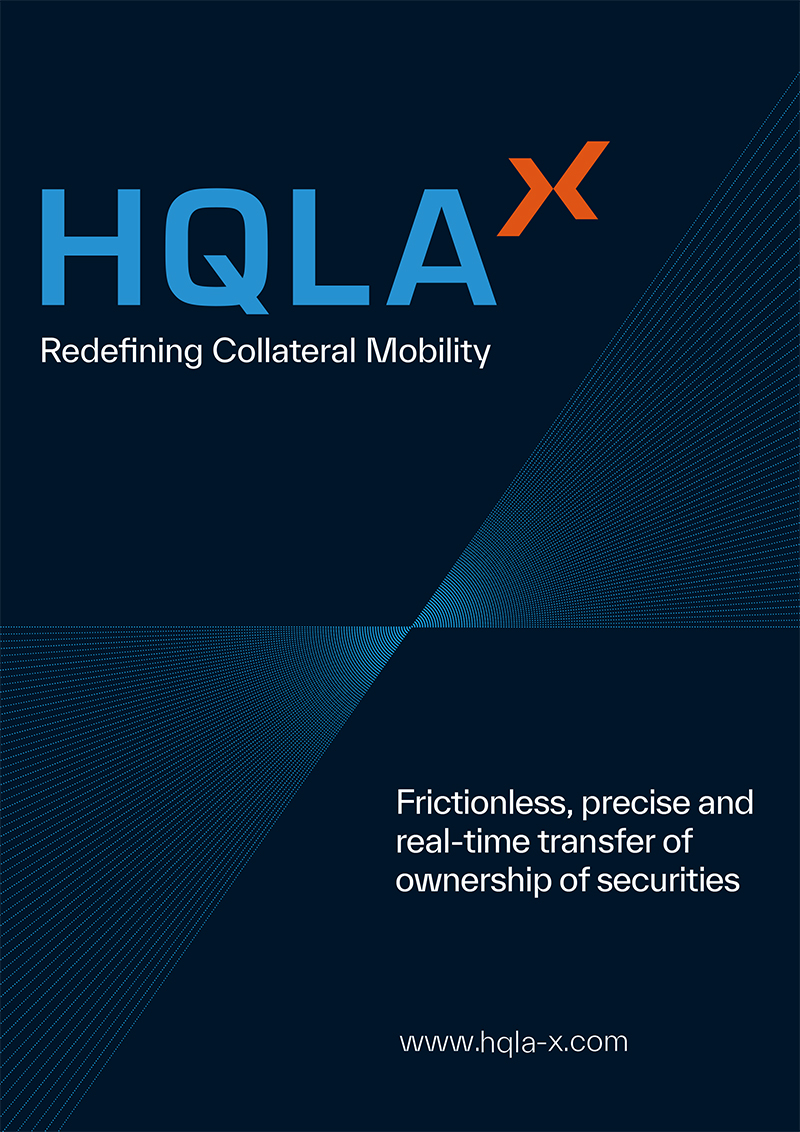2020 Vision
03 September 2019
As market participants gear up for the traditionally busy fourth quarter and planning for next year, eSecLending’s Simon Lee looks at the key talking points and considerations for beneficial owners to examine
 Image: Shutterstock
Image: Shutterstock
Revenue Optimisation
One of the main themes in 2019 when beneficial owners consider the optimisation of their programme revenue is for more emphasis to be placed on improvements in meeting borrower demand. Those lenders whose programmes were closer to a broad ‘ideal’ would inevitably outperform those lenders at the other end of the spectrum. Undeniably, while portfolio composition (quality and quantity) is the primary driver in determining the revenue opportunities available to an individual lender, increasingly, decisions concerning route-to-market, acceptable collateral, and the ability to enter term trades are affecting programme performance to an ever-greater degree.
With regulatory expenditure growing across the industry, cost-management is an even more important feature of the business in 2019 and into 2020, thus driving this focus on optimising the supply/demand dynamic for beneficial owners. The differential in borrower demand for lendable supply deemed of higher quality continues to increase, providing an opportunity to enhance performance for those lenders that can develop their programmes accordingly. Moreover, this trend is hindering those lenders whose programmes are deemed less attractive due to portfolio composition, collateral requirements or otherwise.
For beneficial owners, the name of the game remains constant: structuring their securities lending programmes within a robust governance framework, ensuring their service providers are delivering on their goals and objectives and that the risk/reward equation is appropriately managed.
New entrants/new supply
In 2018 and 2019 we saw several new beneficial owners coming to market, either lending for the first time, or re-entering after a hiatus. Many absences even stretched back to the financial crisis in 2008. The reasons behind this are relatively consistent: an increasingly competitive fund management sector that recognises the boost to fund performance that securities lending revenue can provide, and for other asset owners a greater appreciation of the revenue opportunity that may be being left on the table by sitting on the side-lines.
This scenario is expected to continue through 2020, supported by a combination of factors. These include the continued downward pressure on fund management fees and consequential impact on profitability and further growth in the passive and exchange-traded funds sector (funds for whom securities lending is often an integral strategic component). Moreover, the level of comfort investors have around securities lending is seemingly rising every year we are removed from 2008, helped by the increase in regulation, education and transparency in the industry.
With new lenders there is new lendable supply, which could dilute effect on the performance of individual lenders in the more liquid asset classes and markets. While it is true that the sector evolves and identifies new opportunities from lending in new markets to enhance operational efficiencies through automation, beneficial owners should be cognisant of any potential impact to their individual programme. This may be more the case for those lenders that participate in a pooled programme structure, for whom programme performance is oftentimes relative to other lenders in the pool, and therefore more obviously influenced by the dilutive effect of increased lendable supply within the pool. Going back to previous comments on revenue optimisation, we see further benefits for beneficial owners in considering how programmes may be enhanced to push to the front of the pack. For new entrants, another factor to take into the decision-making process when deciding how to best access the market.
Regulation
No article that looks at how the coming year is shaping up is complete without the mention of regulation, though for our purposes in this article, we will limit our discussion to observations of how beneficial owners are dealing with regulatory change, the potential impact to lending programmes that beneficial owners should be mindful of, and the questions to be asked of service providers in 2020.
Securities Financing Transactions Regulation (SFTR) is the four-letter acronym that is getting the most airtime from market participants in 2019, with the requirement to report finally being with us in 2020.
A great many words have been written on the subject, with no doubt many more to come, so we will exercise brevity here and suggest the following questions beneficial owners that use agent lenders may wish to address:
What does the lending agent’s SFTR solution look like and what is the roadmap for delivery including user acceptance testing, etc?
How will the agent interact with, and deliver data to, the beneficial owner’s preferred trade repository (if the beneficial owner specifies one)?
Will SFTR change the way the agent interacts with borrowers and what will this mean for the beneficial owner?
For those beneficial owners domiciled outside of the EU that may not have a reporting requirement per se, their borrowing counterparties and agent lenders will likely be impacted to varying degrees, which for many organisations will require significant human and financial resources. Those beneficial owners not directly impacted by SFTR requirements should still be aware of how their service providers and counterparties may be effected to avoid any consequential negative impact on their individual programme provision and performance.
Another piece of European regulation, the Central Securities Depositories Regulation (CSDR), will be receiving attention from securities lending market participants this year and next, for the impact that delayed settlement of securities lending transactions in the EU may have on the costs associated with this piece of regulation. The focus for lenders will be on settlement efficiency for new loans, recalled loans, and, most importantly for beneficial owners, ensuring timely settlement of sales trades of securities that were on-loan at the point of trade and necessitate a market recall. While market participants lending in emerging and Asian markets are well-versed in the risks associated with failed settlements in these markets and associated costs, operational efficiency, which should be the cornerstone of every securities lending programme, will come under increasing scrutiny thanks to CSDR.
To finish, although no longer a topic that is considered new, the cost of regulatory capital on the business remains as relevant today as it ever was, even as the impact on securities lending programmes continues to develop. As we noted at the outset, beneficial owners that best meet the evolving borrower demand dynamic will stand to profit most from enhanced programme performance. These shifts in demand are in part a product of the regulatory costs faced by borrowers. So, to comprehensively examine this topic, we need to look at the key regulatory costs facing agent lenders and most importantly indemnification costs, which is potentially the biggest impact on beneficial owners.
Again, while the topic is one that has been a talking point among agent lenders and beneficial owners for some time, the discussion does not stand still. As other regulatory costs come to the forefront, existing costs like indemnification provision must get reviewed in a new context, and programmes may be adapted accordingly. Revised fee splits, limitations on scope of indemnities, and restrictions on lending activity are all potential adaptations open to agent lenders to manage these costs. Given the relevance of these considerations to individual programme performance, staying current to the circumstances of their indemnification policy should be on every beneficial owner’s agenda in 2020.
One of the main themes in 2019 when beneficial owners consider the optimisation of their programme revenue is for more emphasis to be placed on improvements in meeting borrower demand. Those lenders whose programmes were closer to a broad ‘ideal’ would inevitably outperform those lenders at the other end of the spectrum. Undeniably, while portfolio composition (quality and quantity) is the primary driver in determining the revenue opportunities available to an individual lender, increasingly, decisions concerning route-to-market, acceptable collateral, and the ability to enter term trades are affecting programme performance to an ever-greater degree.
With regulatory expenditure growing across the industry, cost-management is an even more important feature of the business in 2019 and into 2020, thus driving this focus on optimising the supply/demand dynamic for beneficial owners. The differential in borrower demand for lendable supply deemed of higher quality continues to increase, providing an opportunity to enhance performance for those lenders that can develop their programmes accordingly. Moreover, this trend is hindering those lenders whose programmes are deemed less attractive due to portfolio composition, collateral requirements or otherwise.
For beneficial owners, the name of the game remains constant: structuring their securities lending programmes within a robust governance framework, ensuring their service providers are delivering on their goals and objectives and that the risk/reward equation is appropriately managed.
New entrants/new supply
In 2018 and 2019 we saw several new beneficial owners coming to market, either lending for the first time, or re-entering after a hiatus. Many absences even stretched back to the financial crisis in 2008. The reasons behind this are relatively consistent: an increasingly competitive fund management sector that recognises the boost to fund performance that securities lending revenue can provide, and for other asset owners a greater appreciation of the revenue opportunity that may be being left on the table by sitting on the side-lines.
This scenario is expected to continue through 2020, supported by a combination of factors. These include the continued downward pressure on fund management fees and consequential impact on profitability and further growth in the passive and exchange-traded funds sector (funds for whom securities lending is often an integral strategic component). Moreover, the level of comfort investors have around securities lending is seemingly rising every year we are removed from 2008, helped by the increase in regulation, education and transparency in the industry.
With new lenders there is new lendable supply, which could dilute effect on the performance of individual lenders in the more liquid asset classes and markets. While it is true that the sector evolves and identifies new opportunities from lending in new markets to enhance operational efficiencies through automation, beneficial owners should be cognisant of any potential impact to their individual programme. This may be more the case for those lenders that participate in a pooled programme structure, for whom programme performance is oftentimes relative to other lenders in the pool, and therefore more obviously influenced by the dilutive effect of increased lendable supply within the pool. Going back to previous comments on revenue optimisation, we see further benefits for beneficial owners in considering how programmes may be enhanced to push to the front of the pack. For new entrants, another factor to take into the decision-making process when deciding how to best access the market.
Regulation
No article that looks at how the coming year is shaping up is complete without the mention of regulation, though for our purposes in this article, we will limit our discussion to observations of how beneficial owners are dealing with regulatory change, the potential impact to lending programmes that beneficial owners should be mindful of, and the questions to be asked of service providers in 2020.
Securities Financing Transactions Regulation (SFTR) is the four-letter acronym that is getting the most airtime from market participants in 2019, with the requirement to report finally being with us in 2020.
A great many words have been written on the subject, with no doubt many more to come, so we will exercise brevity here and suggest the following questions beneficial owners that use agent lenders may wish to address:
What does the lending agent’s SFTR solution look like and what is the roadmap for delivery including user acceptance testing, etc?
How will the agent interact with, and deliver data to, the beneficial owner’s preferred trade repository (if the beneficial owner specifies one)?
Will SFTR change the way the agent interacts with borrowers and what will this mean for the beneficial owner?
For those beneficial owners domiciled outside of the EU that may not have a reporting requirement per se, their borrowing counterparties and agent lenders will likely be impacted to varying degrees, which for many organisations will require significant human and financial resources. Those beneficial owners not directly impacted by SFTR requirements should still be aware of how their service providers and counterparties may be effected to avoid any consequential negative impact on their individual programme provision and performance.
Another piece of European regulation, the Central Securities Depositories Regulation (CSDR), will be receiving attention from securities lending market participants this year and next, for the impact that delayed settlement of securities lending transactions in the EU may have on the costs associated with this piece of regulation. The focus for lenders will be on settlement efficiency for new loans, recalled loans, and, most importantly for beneficial owners, ensuring timely settlement of sales trades of securities that were on-loan at the point of trade and necessitate a market recall. While market participants lending in emerging and Asian markets are well-versed in the risks associated with failed settlements in these markets and associated costs, operational efficiency, which should be the cornerstone of every securities lending programme, will come under increasing scrutiny thanks to CSDR.
To finish, although no longer a topic that is considered new, the cost of regulatory capital on the business remains as relevant today as it ever was, even as the impact on securities lending programmes continues to develop. As we noted at the outset, beneficial owners that best meet the evolving borrower demand dynamic will stand to profit most from enhanced programme performance. These shifts in demand are in part a product of the regulatory costs faced by borrowers. So, to comprehensively examine this topic, we need to look at the key regulatory costs facing agent lenders and most importantly indemnification costs, which is potentially the biggest impact on beneficial owners.
Again, while the topic is one that has been a talking point among agent lenders and beneficial owners for some time, the discussion does not stand still. As other regulatory costs come to the forefront, existing costs like indemnification provision must get reviewed in a new context, and programmes may be adapted accordingly. Revised fee splits, limitations on scope of indemnities, and restrictions on lending activity are all potential adaptations open to agent lenders to manage these costs. Given the relevance of these considerations to individual programme performance, staying current to the circumstances of their indemnification policy should be on every beneficial owner’s agenda in 2020.
NO FEE, NO RISK
100% ON RETURNS If you invest in only one securities finance news source this year, make sure it is your free subscription to Securities Finance Times
100% ON RETURNS If you invest in only one securities finance news source this year, make sure it is your free subscription to Securities Finance Times



